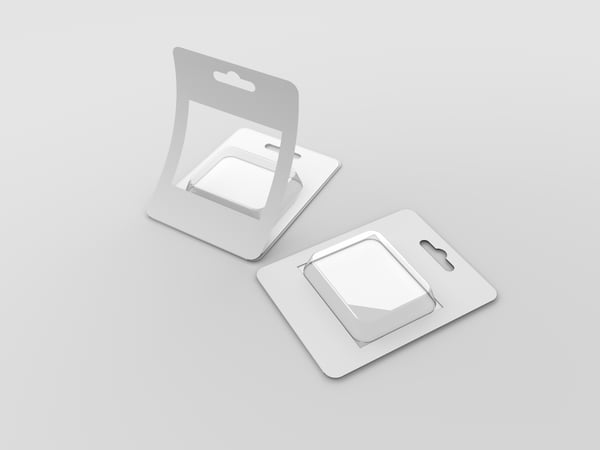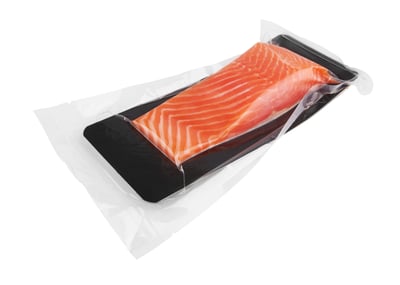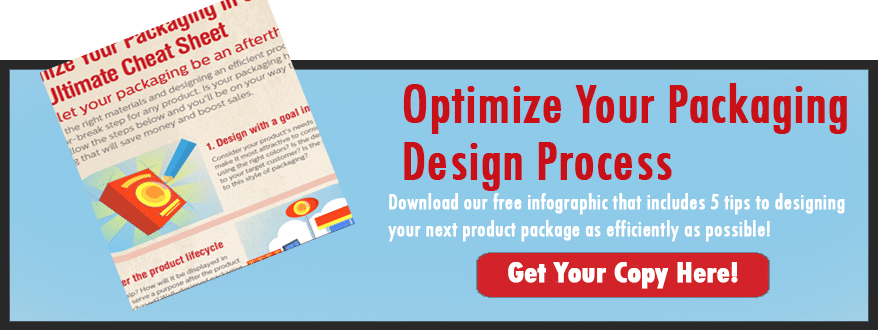What Is The Difference Between Skin Packaging And Blister Packaging?
Are you frustrated with not being able to understand the differences between skin and blister packaging? Don’t worry; it happens to many people.
Maybe you’re a purchasing agent needing to make the right decision on packaging materials. Perhaps you’re a small business owner getting ready to launch a new food product. Regardless of where you’re at in this process, we’re going to help you choose the proper packaging for your products.
Blister packaging and skin packs share some similarities in aesthetics, materials, and heat seal coating. And while they are both a good package solution, they are best suited for different applications. Skin packs are commonly used for packaging fish (such as smoked salmon fillets). Blister packs are more likely to house the fishing lure used to catch the fish!
Industrial Packaging has been selling blister packaging and skin packaging for many years. We talk to people daily who are searching for the correct type of packaging, and we help guide them to make the best decision for their business.
This article will explore the differences between skin packs and blister packs and look at the appropriate applications for each type of packaging.
What Is A Blister Pack?
A blister pack is a type of carded packaging used to package various consumer goods. Blister packs are made from a few different components: the blister board and a thermoformed plastic blister (a type of plastic packaging).
A blister board is a type of paperboard backing that is commonly cut into rectangular sheets. There are many different types of blister packaging. They can be printed with branding and graphic elements to illustrate your product's price, features, and cost.
Sometimes blister packs may have backers made of plastics or other types of materials such as aluminum film (for example, in the case of over-the-counter pharmaceuticals) depending on the source of the blister packs. However, blister board (also known as blister card) is the most common type of material used for blister pack backers.

The "blister" part of the blister pack is a pre-formed container usually made out of plastic and kind of actually looks like a blister. When packaging products with a blister pack, the product is held in place, resting between a backer made of blister board and a plastic pre-formed blister.
What Are Some Common Applications Of Blister Packs?
Some examples of commonly packaged products in blister packs include fishing lures, small hardware components, drugs, toothbrushes, toys (action figures), candy, and hundreds of other various types of products.
Need Help Optimizing Your Packaging?
What Is A Skin Pack?
Skin packs (also known as skin packaging) are another type of carded packaging that is often confused with blister packaging. Skin packaging is made with skin packaging machines. While skin packs look somewhat similar to blister packs, their applications are notably different.

Like blister packs, skin packs have the same basic components - a board and plastic covering (in this case, skin film). The most significant difference is that after the product is between the film and the backer, it is uniformly sealed via a vacuum sealing machine. This is known as vacuum skin packaging.
It can then be shipped as-is, or it can be custom-cut with a device called a die-cutting machine. This allows for a uniform package that removes unnecessary material from the final product. It also results in a smooth, visually appealing package.
Once these processes are completed, the finished product is completely contained in the skin pack, surrounded by surlyn film.
What Are Some Common Applications Of Blister Packs?
Common applications for skin packaging includes the packaging of fish, meats, hardware, car parts, and small consumer goods.
The Differences Between Skin Packs And Blister Packaging
A skin packaged item has a thin surlyn film shrunk around the product and is vacuum-sealed to the backing board. A blister pack features a hard plastic "blister" containing the product but is not vacuum sealed to the backing board.
Which Is Right For You? Blister Or Skin Packaging?
With skin packs, you will need a vacuum sealer and potentially a die cutter or some other method of separating the individual products from the master sheet. Blister packaging only requires a sealer.
When trying to figure out if blister or skin packaging is suitable for your products, you will need to ask yourself a few questions to help choose the appropriate form of packaging.
- Do your products contain sharp or pointed edges? If yes, a blister pack is the better choice.
- Are you packaging food that can spoil (for example, fish)? If you are, a skin pack is a superior choice.
- What is your budget? With skin packs, you will need a vacuum sealer in addition to a skin/blister machine. Blister packaging does not require this additional equipment.
- Is speed to market important? If you answered yes, you might want to choose blister packaging as you can skip the vacuum-sealing step.
Where Can You Learn More About Blister And Skin Packaging?
By now, You should have a pretty good idea about which type of carded packaging makes the most sense for your products. But, you will want to learn more about the kind of packaging that you feel is best.
Do you think that blister packs make the most sense for your products? If you answered yes, you would want to read Blister Packs: Paperboard Backers VS Plastic Backers. This article will help you to choose the proper material combinations for your blister packs.
Do you think that skin packs make more sense for your packaging requirements? If that is the case, we advise you to read Skin Packaging: Surlyn VS Skin Poly Film. This article will help you to choose the proper combination of materials for your skin packaging needs.
About Nathan Dube
As the Digital Marketing Specialist at Industrial Packaging, I am honored to create content for such a phenomenal company and work with one of the greatest teams in the Packaging Industry. Whether creating a video, writing blog posts or generating other pieces of content and multimedia, I am always excited to help educate and inspire our prospects and clients to reach their highest potential in regards to their packaging processes and needs.




